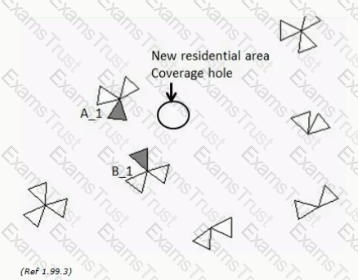After an optimization meeting, an operator decides to double the transmitted power of an LTE cell. To test the effect of this change, a static test is performed before and after the change.
Which statement is correct in this scenario?
Which statement is correct about network slicing?
A customer is deploying VoLTE and complains about high voice drop rates and voice quality degradation at the cell edge in most LTE cells in the area. The network has a dense WCDMA coverage on the 700 MHz band and patchy LTE coverage on the 2100 MHz band.
Which two features would you activate to solve this problem? (Choose two.)
What is a benefit of Remote Radio Unit (RRU) deployment compared to a standard Radio Unit (RU) deployment?
An operator receives customer complaints from an indoor location. The Issues result from a bad neighbor plan in a single RAT and frequency network.
Which two optimization processes would you use to resolve the problem? (Choose two.)
Which identifier is used for locating a UE in a standalone LTE network?
What is an advantage of using flexible numerology in New Radio (NR) 5G?
Using a cell optimization tool, you detect a sector that takes a large amount of traffic from a distant location that is covered by other sites and is also outside of the coverage predicted for this sector.
Which physical optimization action should you perform first In this situation?
Review the exhibit.

A new residential area has recently been built showing a lack of 3G uplink coverage as shown in the exhibit. The terrain is flat and all the buildings in the area are 20 meters in height with no other relevant direct obstacles.
What should be applied to cells A_l and 8_1 to provide 3G service to the new area knowing that both cells have a soft handover (SHO) factor of 1.9?